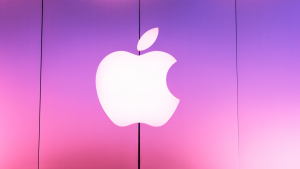Last year was the year of the Magnificent 7 stocks, the seven tech companies that powered the S&P 500 to a 24% gain. So dominant were those seven companies that if you removed them from the equation, the benchmark index would have generated only 8% for the year.
That’s because the S&P 500 is a market cap-weighted index. This means each company’s valuation determines what influence it has to the index’s performance. As each Magnificent 7 stock increased in value last year, its impact on the index got magnified. Forbes says their concentration in the index grew to 29%, the largest ever. Had the S&P 500 been equal-weighted, it would have earned only 12%.
As we come to the end of the first quarter of 2024, are the Margnificent 7 stocks still so influential? More importantly, after the gains of last year, are they still worth investing in? Let’s look at each and find out.
Apple (AAPL)

Apple (NASDAQ:AAPL) is off to a much slower start this year than last. At this point a year ago, AAPL stock was up 22% on its way to 48% gain for the full year. Now it is down over 11% as sales slow and a lack of new products with mass appeal weighs on the stock.
The iPhone accounts for 52% of all Apple sales but they fell 3% last year. There is hope the next iteration of the smartphone containing artificial intelligence (AI) capabilities will reignite sales but what form those functions will take remains to be seen. It’s also notable that Apple farmed out its AI development to a third party rather than create something in-house.
The Vision Pro mixed reality headset was introduced to great fanfare but at a starting price of $3,500, it’s not going to be a big mover.
Currently, Apple services are the tech stock’s main growth driver. That includes things like iCloud, Pay, Card, TV+, Fitness+ and Music. Revenue grew 9% last year to $82.5 billion and is the second largest revenue contributor behind the iPhone. Segment growth, however, is slowing as revenue rose 14% in 2022.
Yet, AAPL stock isn’t cheap. It trades at 27 times earnings, over twice its sales and 25 times its free cash flow. Considering the lack of catalysts, Apple could underperform the S&P 500 this year.
Amazon (AMZN)

Amazon (NASDAQ:AMZN) is faring much better than Apple with shares up 17% so far this year. That’s even better than last year’s 9% increase at this same point though AMZN stock went on to grow 80% in 2023. The e-commerce giant could be on to even bigger gains this year.
Wall Street foresees Amazon earnings soaring 175% in the first quarter with full-year growth of 45%. E-commerce returned to profitability last year and sales were growing at a healthy clip both here and abroad. The cloud services business is also enjoying double-digit growth and remains Amazon’s profit center. While growth was at a slower pace than years past, Amazon Web Services remains the cloud infrastructure leader.
Digital advertising will also be a key component of the future and analysts expect the company will control 15% of the market by 2025.
While Amazon’s valuation is even pricier than Apple’s, Amazon is exhibiting growth on multiple fronts. AMZN stock should outpace the broad market index this year.
Alphabet (GOOG)(GOOGL)

Alphabet (NASDAQ:GOOG, GOOGL) remains a cash-producing machine, generating $70 billion in free cash flow last year. It ended 2023 with over $110 billion in cash, equivalents, and short-term investments on its balance sheet. Although Alphabet chooses to use that cash to buy back its stock instead of paying shareholders a dividend, as more tech companies reward shareholders with dividends, it just might initiate one too.
While Amazon is making big strides in digital advertising, Alphabet remains the industry behemoth. Between Google, YouTube, Gmail, Google Maps, Google Chrome, Android and Google Cloud, Alphabet is the world’s largest online advertising platform. It generated almost $225 billion in ad revenue last year, or 80% of total revenue. That’s more than the market valuation of 93% of the companies on the S&P 500. With ad dollars flowing once more, it is expected ad spending will exceed $1 trillion for the first time in 2024. Google will be grabbing the lion’s share of that money.
AI could be Alphabet’s next growth driver. While its Google Gemini got off to a rocky start, it is what will be inside Apple’s iPhone AI interface. The slow start shouldn’t hold back Alphabet because the industry is still very much in its infancy. All of which means GOOG stock should handily outperform the index this year.
Meta Platforms (META)

Social media platform Meta Platforms (NASDAQ:META) has turned into a finely tuned machine. META stock is up 44% this year, the same pace it had a year ago. It went on to triple in value in 2023. While I’m not expecting that kind of performance this year, Meta PlatformS can easily outrun the S&P 500 in 2024.
Facebook, Instagram and WhatsApp have become one of the biggest avenues for reaching other people. META has nearly 4 billion monthly active users across its family of apps generating $135 billion in revenue from advertising. That’s a 16% increase from the year before even though MAUs only rose 7%. So Meta is squeezing more revenue out of every user.
Despite still being committed to the money-draining metaverse, META remains a cash-rich business and is why it is the latest tech giant to begin paying a dividend. At only 50 cents per share, or $2 per share annually, and yielding about 0.4%, there is plenty of room for future growth.
Microsoft (MSFT)

After investing billions of dollars in OpenAI and integrating its generative AI chatbot into virtually every aspect of its products and services, Microsoft (NASDAQ:MSFT) transformed into one of the most important AI stocks today. It is showing business just how far AI can be pushed into a company’s operations. The payoff, though, is still some way down the road.
Now it’s branching out in new directions. The latest iteration is Copilot for Security, Microsoft’s cybersecurity venture. Although cybersecurity has long been a part of the tech giant’s, adding AI to it is a game-changer. For one, it opens up a new pricing model for Microsft. By charging only $4 per “security compute unit” it creates an affordable cybersecurity option that allows companies to buy just what they need. As they grow and their needs expand, they can buy more.
Microsoft already generated $20 billion annually from cybersecurity. This should help it expand significantly while also pushing MSFT stock well ahead of the broad market index’s performance.
Nvidia (NVDA)

Of course, if there is any name associated with AI, it is Nvidia (NASDAQ:NVDA). The chipmaker grew from a company with a market valuation of around $364 billion at the end of 2022 to $2.4 trillion today, an increase of 555%!
Wall Street expects NVDA stock’s earnings to surge 476% in the first quarter but do little more than double for the full year. It means Nvidia’s profits will be front-loaded in 2024. Still, those sorts of gains should propel this too-good-to-be-true stock to even greater heights this year.
That’s because there is no end to the demand for AI accelerators for use at data centers and elsewhere. The inexorable demands of the cloud as businesses migrate data requires the powerful and complex computer chips to handle processing it all. Nvidia already had the most powerful chips but now it just unveiled its newest chip, Blackwell. Microsoft’s Azure cloud business already adopted it for generative AI tasks.
At the same time, Nvidia’s valuation can’t be ignored. As good as the growth story is, NVDA stock is priced at levels that assume the chipmaker can grow free cash flow at a compounded annual growth rate of 57% every year for the next 10 years. That’s just not feasible. While I have no illusions Nvidia will maintain that breakneck pace, I still see it beating the S&P 500 this year.
Tesla (TSLA)

Last is Tesla (NASDAQ:TSLA), the seeming ne’er-do-well of the Magnificent 7. Although the stock was included in the group, the electric vehicle (EV) maker peaked early. TSLA stock hit its high in early July and then began a long, steady slide lower. Where it had been up 130% mid-year, it is now down 38% from those heights. Slowing industry sales, price cuts and tougher competition are adding up to a diminished outlook for TSLA stock.
Wall Street sees earnings falling 12% in the first quarter and plunging 27% for the year. Of all the Magnificent 7 stocks, Tesla is seen as the most expendable. But I’m not ready to write off the EV maker yet. It is still one of the largest EV companies in the world, its Model Y car is one of the most popular EVs sold, it is raising prices on the vehicle and will be introducing a new lower-cost EV next year. Some headwinds may keep it from surpassing the performance of the S&P 500 this year. But TSLA stock could be this year’s sleeper to beat thge index.
On the date of publication, Rich Duprey did not hold (either directly or indirectly) any positions in the securities mentioned in this article. The opinions expressed in this article are those of the writer, subject to the InvestorPlace.com Publishing Guidelines.
